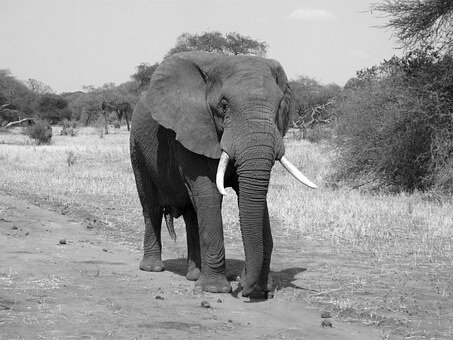FUN QUESTION: Would you like to know how elephant meat tests like, I have no idea if elephant meat is addible, please share your opinions, maybe someone actually knows how it tests like.

The first thing that comes to mind when someone imagines an elephant is ivory. Ivory is prized for its close-grained texture adhesive hardness, mellow colour and pleasing smoothness. It may be painted or bleached and is an excellent material for carving. Large surfaces suitable for veneer are obtained by cutting spiral sheets around the tusk. Commercial uses of ivory include the manufacture of piano and organ keys, billiard balls, handles and minor objects of decorative value. In modern industry, ivory is used in the manufacture of electrical appliances, including specialised electrical equipment for airplanes and radar.





Though the Convention of International trade in Endangered Species of Wild Fauna and Flora (CITES) banned the global commercial ivory trade in 1989, the illegal tusk trade remains strong and poaching continues across the continent. In 2016, the Great Elephant Census revealed the savanna elephant numbers were declining at a rate of 8 percent or 27000 elephants a year. African elephants are also losing their habitat as the human population grows and people convert land for agriculture and development. Elephants need a lot of room to roam, so habitat destruction and fragmentation not only makes it harder for them to find food, water and each other, but it also puts them in increased conflict with humans, a dangerous prospect for both.

The largest animal that walks the earth. the giant of Sub-Sahara Africa. Elephants exhibit mirror self-recognition, an indication of self-awareness and cognition that has also been demonstrated in some apes and dolphins. The poaching of elephants for their ivory, meat and hides has been one of the major threats to their existence.

ASIAN ELEPHANT
 AFRICAN ELEPHANT
AFRICAN ELEPHANT
The African elephant is slightly larger than their Asian cousins and can be identified by their larger ears that look somewhat like the continent of Africa, the Asian elephants have smaller, rounded ears.
African elephants are a keystone species, meaning they play a critical role in their ecosystem. Also known as ecosystem engineers, elephants shape their habitat in many ways. During the dry season, they use their tusks to dig up dry riverbeds and create watering holes many animals can drink from. Their dung is full of seeds, helping plants spread across the environment and it makes pretty good habitat for dung beetles too. In the forest, their feasting on trees and shrubs creates pathways for smaller animals to move through in the savanna, they uproot trees and eat saplings, which helps keep the landscape open for zebras and other plains animals to thrive.

Elephants are matriarchal, meaning they live in female-led groups. The matriarch is usually the biggest and oldest. She presides over a multi-generational herd that includes other females, called cows and their young. Adult males, called bulls, tend to roam on their own, sometimes forming smaller, more loosely associated all-male groups.

If by a stroke of ill fortune you come face-to-face with an angry elephant, you'll need to know how to avoid being hurt. Fortunately, most elephant's charges meant to frighten you not harm you. If facing a charging angry elephant, your best bet is to shout, yell and make as much noise as you can. With these directions in mind, you'll be well prepared to survive an elephant charge.
METHOD 1
(1) Recognise if the elephant's ears are pinned back it's about to charge
(2) Look at the elephant's trunk to see if it's curled inward in attack position
(3) See if the elephant is twitching its trunk or swinging one leg to and from meaning elephants indecision regarding whether to charge or mock charge
METHOD 2
(1) Stay downwind from the elephant at all time
(2) Run in a zig-zag pattern if the elephant makes a real charge or run and make a lateral movement meaning turn a sharp 90 degree angle and always run and take those sharp turns
(3) Find something to keep between you and the charging elephant
(4) Climb up a sturdy tree or rock face to escape the elephants's reach
(5) Hop into a narrow ditch where the elephant can't reach you
(6) Throw a decoy object away from yourself, like your clothing to distract the elephant
(7) Resort to making noise if the elephant isn't distracted by a decoy
METHOD 3
(1) Stand still if the elephant is making a mock charge
(2) Do not show your back to the elephant during a mock charge
(3) Yell and shout to drive the elephant off if its making a mock charge
The elephant is so huge I wonder if it can crush a car
Downvoting a post can decrease pending rewards and make it less visible. Common reasons:
Submit